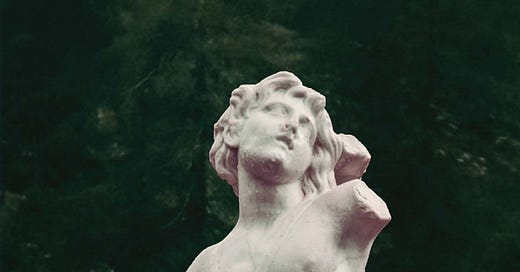Homeric Epic, Narrative Myth, and the Life of Stories
A Short Course from the Roundtable at the 92nd Street Y
This is a continuation of my substack on the Iliad. All proceeds from the substack are donated to classics adjacent non-profits on a monthly basis. Last year this substack provided over $2k in charitable donations.
Earlier this year, I published Storylife: On Epic, Narrative, and Living Things with Yale University press. Storylife applies biological analogies to Homeric poetry and early myth to explore how narrative develops independent of individual human intention and to propose that stories have an agency of their own. It uses the architecture of Homeric language in particular—which is repetitive and often characterized as formulaic—as a case study for how complex structures and thought can develop from smaller structures in a fashion similar to multicellular life.
Storylife asks readers to rethink human creativity, the importance of collective actions (and reactions) and the lives we build together with and against narrative. It asks audiences to reconsider how much we control over stories and, in closing, how we should educate ourselves once we acknowledge the power that narrative exerts over us.
Roundtable at the 92nd Street Y has asked me to run some sessions based on this work. Each session will touch upon questions and answers offered in the book, but will expand with additional concepts from literature and science.
The sessions will be in three parts
Session 1: Where does Homer come from?
Modern literary and linguistic theories have provided different models for thinking about how language works and where stories come from. This introductory session focuses on the nature of Homeric poetry and the history of talking about its performance, authorship, and reception over time (the so-called “Homeric Question”). This session will also provide an overview of modern approaches from computational linguistics (Large Language Models), cognitive science, and evidence from Homeric language for the development and function of stories.
Session 2: Structure and Meaning: from DNA to Complex Ecologies
This session focuses on using models from biology and the natural sciences to help us understand the structure of Homeric language and poetry and the relationship between audiences and community reception in the creation and perpetuation of stories. In addition to analogies from cellular structure and the comparison of the epigenetic potential of DNA (when qualities are "activated" by environmental features) to illustrate how syntax and meaning work in traditional languages like Homeric epic, this session will use the distinction between convergent and parallel evolution and blending theory from cognitive science to help us rethink engagement between ancient epic and their audiences.
Session 3: Heroes as Parasites; Stories as Living Things
This session asks how we reconsider our relationship with narratives if we use models from symbiosis (the biological state of different organisms living together) to understand their impact on the communities that tell them. We will look at two examples from Greek epic and myth–the rhetoric of heroic glory and the so-called “Last Hero”, the boxer Kleomedes–to explore the impact of stories on their audiences as examples of both parasitism (when one organism’s ‘success’ depends on harm to others) and mutualism (when multiple organisms benefit from a symbiotic biological relationship). The session will end with a discussion on how we should teach and learn about narratives with these lessons in mind.
Some podcasts with more from Storylife
The Partial Historians were kind enough to invite me to talk about the book on their podcast.
Ancient Office Hours from the Oxymandias Project with Lexie Henning
Some More
Yale University Press sponsored a blog post about conspiracies that builds on the book. And, second, the audiobook format was released on February 18th.
A few reviews:




